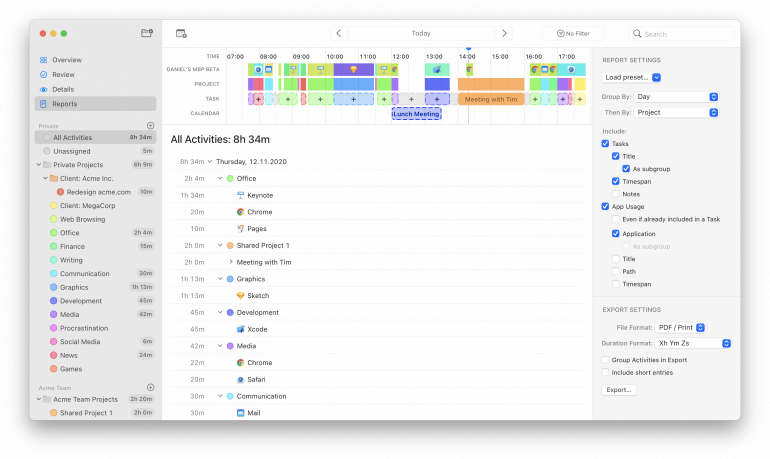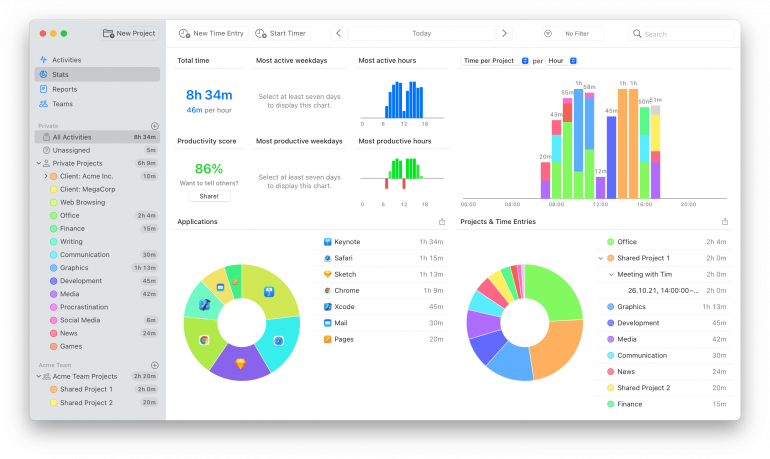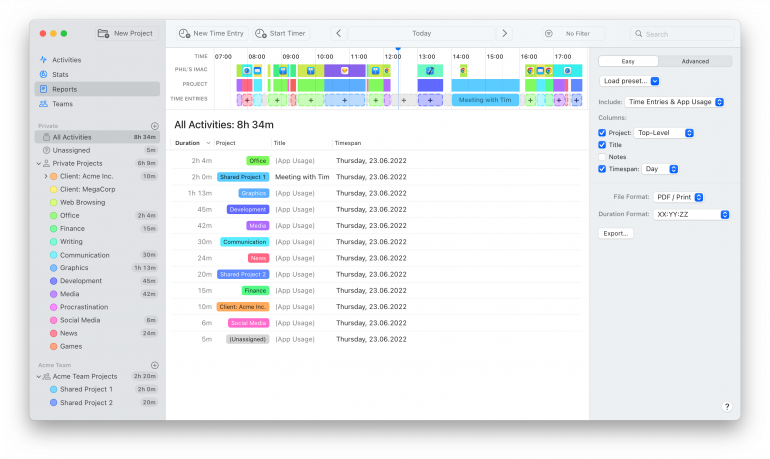Asynchronous Work: How to Stay Focused and Productive in the New World of Work
 Image: Al ghazali
Image: Al ghazali
Working environments aren’t what they used to be. The days of masses of people huddled in cubicle farms has largely become a thing of the past. Teams are now increasingly decentralized, with a growing number working in various locations, across different time zones, and according to their own schedules. The former synchronous working model we used to live by has been replaced with a new one. Welcome to the world of asynchronous work.
While this trend was gaining traction before the pandemic, there’s no doubt that Covid helped it to become an international phenomenon. Leaders and employees who thought their companies couldn’t work asynchronously were proven wrong. And after working remotely or on a hybrid basis in the years since then, many aren’t going back. A massive McKinsey study has revealed that 58% of employees work today remotely at least part of the time.
Of course, if you’re a freelancer, you’re probably familiar with async work. Some freelancers are expected to work specific hours, be available during certain windows, or even work from a client’s office occasionally. These cases are rare, however. Many dictate their own working hours and habits.
But this doesn’t mean that synchronous work is pointless or outdated. There are plenty of good reasons to work at the same time as, and alongside, other people. Let’s take a look at asynchronous work vs. synchronous work. The pros and cons of each. And how you can stay productive no matter how or where you work.
Table of Contents
What is Asynchronous Work?
 Image: Tran Mau Tri Tam
Image: Tran Mau Tri Tam
Asynchronous work refers to people working according to their own schedule, regardless of their coworkers’ schedules. If you send an email to a coworker at the end of your day to update them on your progress, and they reply hours later when their day starts (or whenever responding makes sense for them), you’re working asynchronously.
In an asynchronous environment, communication typically happens electronically, rather than in person. Email, direct messaging (like Slack or Teams), project management tools (like Asana, Jira, Teamwork or Trello), and collaboration tools (like Google Workspace) are key here. We’ll go into this in more detail in a moment.
What are the pros of asynchronous work?
The world is shifting toward asynchronous working. Many organizations prefer it, or they’re being pushed towards it by employees who expect it. The same McKinsey research revealed that, when people have the chance to work flexibly, 87% of them take it. If your company is set on a synchronous working model, you could lose talent to others that offer greater flexibility.
Here are a few benefits you should be aware of:
- You can work when it suits you the best. Being able to fit your work around your life means you’re less likely to miss important events or quality time with your loved ones. You’re able to create a lifestyle that works for you, and manage your mental health better.
- Fewer interruptions means you have more opportunities for deep, undisturbed work. This enhances productivity, performance, and engagement. It also relieves you of the pressure to respond immediately, giving you time to think about your responses and deliver well-thought-out replies. Ultimately, this control over your workday eliminates a lot of stress.
- In an asynchronous environment, communication happens digitally. This creates a living record of everything, giving you the chance to refer to past conversation at any time.
- Finally, if you’re an employer, working across multiple time zones gives you access to global talent. You can hire the best employee or subcontractor you can afford, not just in your city, but from anywhere in the world.
What are the cons of asynchronous work?
Despite its advantages and popularity, asynchronous work has some disadvantages, too:
- It can be difficult to be productive. Everyone battles with productivity from time to time, but if you’re working almost entirely on your own, you might find it easier to get caught up in time sinks. At times working with other people can be a distraction. But at others, being part of a team that’s working together can help you to stay focused. (Either way, tracking your time with a tool like Timing can help you here!)
- You miss out on the little interactions that build bonds between people. Morning cups of coffee and watercooler chats can help real friendships to form, and can even spur creativity and innovation. Without these in-person conversations, isolation and loneliness are real concerns. You have to take deliberate steps to find human connection.
- It can be difficult to get a response to a problem or question immediately. If something goes wrong, it might take 24 hours or more for the right person to get back to you. In addition to being frustrating, this can delay projects and can inadvertently cause budgets to stretch, too.
- Sometimes people feel the need to overcommunicate to make sure they’re heard. If you’re not sure if a client has read your email, for instance, you might be tempted to message them on Slack as well. This can be disruptive and can create more work. And written communication certainly isn’t perfect. It lacks certain nuances, like body language, innuendo and humor. You have to be very careful what you write.
What is asynchronous communication?
Speaking of communication, it’s worth exploring what it means to communicate asynchronously in a little more detail.
Asynchronous communication refers to any type of communication where there is a time lapse between responses. It doesn’t take place in real time, in other words, like an in-person or telephonic conversation. Instead, there’s a delay between the initial form of communication and its reply.
Email, Slack, Chanty, Glip, Loom, Soapbox, Tettra, Twist, Monday.com, as well as your company’s own internal wiki, shared messaging boards, and newsletters are all examples of asynchronous communication. If you’re using these platforms, you’re likely not expecting an immediate answer.
This approach has its advantages and disadvantages. It can give you the freedom to work and respond in your own time. Maybe when you need to wrap up another project first, or jot down a few new ideas. But it also limits the opportunity for you to brainstorm collectively with the rest of your team and build a rapport.
How to Stay Productive if You’re an Async Worker
Productivity is critical for business success. If you’re whiling away the hours and neglecting your daily tasks, this could have very real financial and reputational consequences for your business. As far as possible, you’ve got to focus on getting the job done as efficiently as possible.
In an async working environment, staying productive boils down to three things: time autonomy and planning.
Time autonomy
Whether you’re a freelancer or a full-time employee, you’re ultimately responsible for your own time. No one is standing over your shoulder, micromanaging each task. (At least, we hope not, micromanagement is largely considered a deeply toxic and counterproductive management style.) But before you can be accountable for your time, you have to know how you are spending it. How? By tracking it! Enter Timing.
Timing works in the background, automatically tracking which apps, documents and websites you use, so, looking back, you know exactly what you were working on at any given time. Tracked times are stored locally and never leave your Mac (unless you opt into sync) and you don’t have to worry about starting or stopping timers at all.
In this way, Timing delivers time sheets you can trust, and offers valuable insights you can use to improve your workflow and productivity. Simply refer to the Activities tab for an overview of the work you’ve done on any particular day or over a certain period.

Your Timing Stats tab will give you a high-level summary of how you’re spending your time. Are certain activities taking longer than they should? Are you indulging in pointless distractions? Are your time estimates (and therefore your quotes and invoices) accurate? Or, are there certain times of the day you seem to work better than others?

Tracking your time can help you to stay focused and productive if you’re working asynchronously.
Planning
Next, you need to plan ahead. Notes and to-do lists don’t always cut it if you’re working with a team remotely. You need to plan your days deliberately so you have everything you need from everyone else in order to work.
Imagine you need graphics from a designer before you can build a client’s website, for example. If you worked in sync, you could simply walk over to their desk to check in. But in an asynchronous environment, you have to plan ahead, and deliberately nudge them in advance.
Project management tools can help here. Break your projects into smaller tasks and invite anyone who might play a role to your project. Assign tasks to the right people and give everything a deadline.
When you set deadlines for tasks, consider the entire project’s scope. In terms of our website example, you would set the deadline for the designer’s deliverables several days before you need them. This gives you a chance to look over the work and request changes before you settle in to complete your own work.
What is Synchronous Work?
 Image: Marvin Meyer
Image: Marvin Meyer
OK, if that’s async work, what then is the opposite? How would you define synchronous work?
Synchronous work is when multiple people work together at the same time. They typically share work hours and make themselves available to one another throughout the working day. If you have standard work hours that align with the rest of your team, and your interactions typically happen in real time, you’re working synchronously.
What are the pros of synchronous work?
Working with people in an office might sound a little foreign these days, but synchronous work certainly has its advantages:
- Sharing experiences and communicating directly nurtures connections between people. Real-time conversations make people feel like they’re part of a team. And celebrating together when the team achieves something important is almost always bonding.
- When everyone is working together, you can get immediate responses to your questions and concerns, which means that problems are solved much faster. People are also more likely to voice their ideas when they don’t have to spend time writing them up.
- Working synchronously is also good for sensitive communication. Sometimes you don’t want to put something in writing because it could be accessed by unintended recipients, or incorrectly interpreted.
What are the cons of synchronous work?
Like asynchronous work, synchronous work has its disadvantages as well:
- Time zone differences can be particularly painful for synchronous teams who are spread all over the world. You can try to find overlapping hours to work together, but it usually results in someone working at disruptive times of the day. And that can have a negative effect on productivity, performance and engagement.
- When team members (or clients, coworkers, or subcontractors) are expected to work at the same time, everyone runs the risk of being bombarded with chat or email interruptions. We spend 90 minutes a day instant messaging each other for work, which is an hour and a half of time that could be spent on focused, innovative tasks. What’s more, when people feel pressured to respond quickly, their responses might be careless, incomplete or confusing.
- When other people aren’t available to work (due to vacation, sick leave, or other absences), their productivity loss can also be your productivity loss. However, needing to be available to other people at specific times is stressful. It comes with an obligation that makes work unenjoyable, especially if you have a lot on your plate already.
What is synchronous communication?
Again, let’s dive into this for a moment.
Synchronous communication is communication that happens in real time between two people or more. It’s an in-person conversation, a phone call, or a video conference. It’s the kind of communication that demands an immediate response.
Synchronous communication is common in offices. Even when people have each other’s email addresses, or are connected on instant messaging apps, they’re likely to walk up to each other’s desks from time to time to chat things through. It can be a comfort to speak to a real human being. And to gauge their response to something not only through their words, but also through their tone and body language.
Even in remote environments, adopting synchronous communication approaches occasionally — like video calls, with everyone’s video turned on — can help people to feel like they’re connected to their colleagues.
How to Stay Productive in Synchronous Environments
Staying productive in a synchronous work environment is similar to staying productive in an asynchronous work environment. You need to manage your time well and plan ahead. But there is another (unpredictable) element that you have to consider as well: other people.
In a synchronous environment, distractions from people are inevitable. People will find reasons to interrupt you simply because you’re sitting there. And you’re likely to find your thought processes constantly broken by questions and comments. (Unfortunately, though tempting, placing a “Do not disturb” post-it on your forehead isn’t very polite.)
Does this mean you should ignore everyone? Not at all. But it’s important to set your own boundaries. For instance, if you establish a rule to reply to emails once a day, stick to it, no matter how often other people interrupt you in person. And if you designate 9am to 11am for deep work, don’t respond to interruptions until you’re finished. Even in synchronous environments, it’s acceptable to find a quieter place to do focused work for a period of time. Move to a solitary corner or book a meeting room.
Remember that your productivity is also important for billing purposes. If you want to ensure that you’re quoting correctly, and using not exceeding) the time you’ve allocated for a project, evaluate your reports in Timing. These reports will tell you exactly what time is going where, and help you to export this data when you need to invoice.

How to Eliminate Excessive Distractions
Our lives are full of distractions. Phone calls, notifications, friends, colleagues, and even unavoidable thoughts and feelings threaten our productivity all the time. Sometimes it feels like the entire world is vying for our attention. Whether you work asynchronously or synchronously, it is important to eliminate distractions so you can focus on producing good work.
Here are our top tips to avoid distractions:
- Eat a healthy diet and get regular exercise to boost your energy levels
- Implement a reasonable bedtime routine to help you sleep well
- Use a time tracking tool to monitor how much time you spend on your activities — try to reduce those that keep you away from your work
- Eliminate sources of distractions from your work space, including, at times, your phone
- Clarify your day before you start — plan exactly what you need to accomplish
- Keep your workspace clean and organized. Hide anything that doesn’t relate to whatever you need to work on
- Designate times of the day to check your email and notifications. Avoid them during the other parts of the day
- If you can’t resist turning your notifications off completely, at least silence them
- Lock yourself out of any apps or websites that tend to distract you
- If you work at home, close the door and tell others not to bother you
- Break your work into small pieces. Little tasks are easier to focus on than big ones
- Schedule your own breaks. If you know a break is coming up, you’re more likely to keep working
- If you’re struggling on a task, set it aside and come back to it later
 Image: Dan Barrett
Image: Dan Barrett
Bottom Line
So, which should you pick? Asynchronous work or synchronous work? Unfortunately, there’s no right answer here. Both both have their place. Which one you choose depends on what feels best for your personality, your business and your goals.
Of course, it’s worth bearing in mind that these two options aren’t mutually exclusive. In fact, many people and businesses find that a hybrid approach works best. You might work async when you’re committing to focused work, but go into the office to work synchronously with your colleagues when you need to brainstorm. This gives you the freedom to enjoy the benefits of both, and hopefully none of the disadvantages.
No matter how you work, remember to focus on your productivity. Your time is valuable — make it work for you. Start by downloading Timing’s free 30-day trial today so that no minute gets missed.
Asynchronous work: Frequently Asked Questions
What is asynchronous work?
Asynchronous work is when people work independently from one another, without relying on immediate, real-time communication. Synchronous work, on the other hand, is when people work together at the same time and regularly have in-person, telephonic or video conversations.
What are the benefits of asynchronous work?
Async work offers greater flexibility, and can help you to stay focused on the task at hand. If it’s combined with a good automatic time tracking tool, it can ensure that your days are as productive as they can be. Because communication happens electronically, it also keeps a record of all work-related conversations.
What tools and technologies are useful for asynchronous work?
Time tracking and project management software are especially useful for async work. They can help you manage your time effectively, and ensure that you’re communicating openly and regularly with everyone you’re working with — even if you’re in different countries and time zones.
What are some best practices for asynchronous communication?
Communicate transparently and frequently with your colleagues and clients — they don’t know what you’re working on unless you tell them. If you’re an employer, ensure everyone has received the right training to use the tools in your stock. And remember that it’s a good idea to schedule synchronous communication from time to time. Connecting on a video call shows your colleagues that you’re still a real person.
